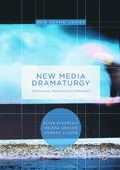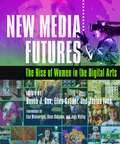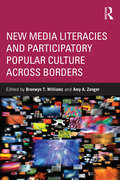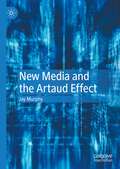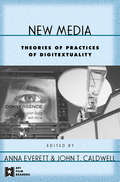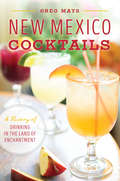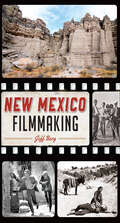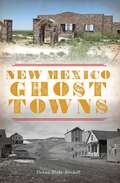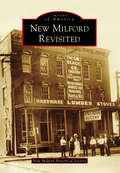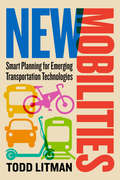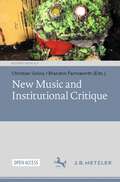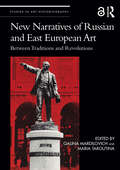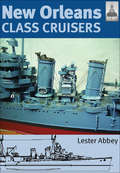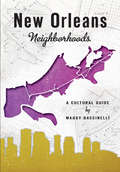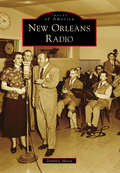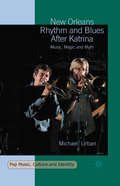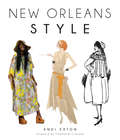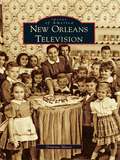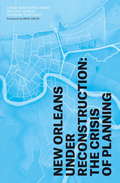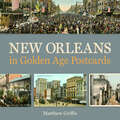- Table View
- List View
New Media Dramaturgy
by Peter Eckersall Helena Grehan Edward ScheerThis book illuminates the shift in approaches to the uses of theatre and performance technology in the past twenty-five years and develops an account of new media dramaturgy (NMD), an approach to theatre informed by what the technology itself seems to want to say. Born of the synthesis of new media and new dramaturgy, NMD is practiced and performed in the work of a range of important artists from dumb type and their 1989 analog-industrial machine performance pH, to more recent examples from the work of Kris Verdonck and his A Two Dogs Company. Engaging with works from a range of artists and companies including: Blast Theory, Olafur Eliasson, Nakaya Fujiko and Janet Cardiff, we see a range of extruded performative technologies operating overtly on, with and against human bodies alongside more subtle dispersed, interactive and experiential media.
New Media Futures: The Rise of Women in the Digital Arts
by Donna Cox Ellen Sandor Janine FronTrailblazing women working in digital arts media and education established the Midwest as an international center for the artistic and digital revolution in the 1980s and beyond. Foundational events at the University of Illinois and the School of the Art Institute of Chicago created an authentic, community-driven atmosphere of creative expression, innovation, and interdisciplinary collaboration that crossed gender lines and introduced artistically informed approaches to advanced research. Interweaving historical research with interviews and full-color illustrations, New Media Futures captures the spirit and contributions of twenty-two women working within emergent media as diverse as digital games, virtual reality, medicine, supercomputing visualization, and browser-based art. The editors and contributors give voice as creators integral to the development of these new media and place their works at the forefront of social change and artistic inquiry. What emerges is the dramatic story of how these Midwestern explorations in the digital arts produced a web of fascinating relationships. These fruitful collaborations helped usher in the digital age that propelled social media. Contributors: Carolina Cruz-Niera, Collen Bushell, Nan Goggin, Mary Rasmussen, Dana Plepys, Maxine Brown, Martyl Langsdorf, Joan Truckenbrod, Barbara Sykes-Dietz, Abina Manning, Annette Barbier, Margaret Dolinsky, Tiffany Holmes, Claudia Hart, Brenda Laurel, Copper Giloth, Jane Veeder, Sally Rosenthal, and Lucy Petrovic.
New Media Literacies and Participatory Popular Culture Across Borders
by Bronwyn T Williams Amy A ZengerHow do students’ online literacy practices intersect with online popular culture? In this book scholars from a range of countries including Australia, Lebanon, Nepal, Qatar, South Africa, Turkey, and the United States illustrate and analyze how literacy practices that are mediated through and influenced by popular culture create both opportunities and tensions for secondary and university students. The authors examine issues of theory, identity, and pedagogy as they address participatory popular culture sites such as fan forums, video, blogs, social networking sites, anime, memes, and comics and graphic novels. Uniquely bringing together scholarship about online literacy practices and the growing body of work on participatory popular culture, New Media Literacies and Participatory Popular Culture across Borders makes distinctive contributions to an emerging field of study, pushing forward scholarship about literacy and identity in cross-cultural situations and advancing important conversations about issues of global flows and local responses to popular culture.
New Media and the Artaud Effect
by Jay MurphyThis book proposes, following Antonin Artaud, an investigation exploring the virtual body, neurology and the brain as fields of contestation, seeking a clearer understanding of Artaud's transformations that ultimately leads into examining the relevance Artaud may have for an adequate theory of the current media environment.New Media and the Artaud Effect is the only current full-length study of the relation of Artaud’s work to dilemmas of digital art, media and society today. It is also singular in that it combines a far-reaching discussion of the theoretical implications and ramifications of the ‘late’ or ‘final’ Artaud, with a treatment of individual media works, sometimes directly inspired from Artaud’s travails.Artaud has long been justly regarded as one of the seminal influences in mid- and late-20th century performance and theater: it is argued here that Artaud’s insights are if anything more applicable to digital/post-digital society and the plethora of works that are made possible by it.
New Media: Theories and Practices of Digitextuality (AFI Film Readers)
by John T. Caldwell Anna EverettFirst published in 2003. Routledge is an imprint of Taylor & Francis, an informa company.
New Mexico Cocktails: A History of Drinking in the Land of Enchantment (American Palate)
by Greg MaysNew Mexico may appear to be the land of a thousand Margaritas, but its distilleries and historic cocktails are complex enough to satisfy even the most discerning palate. Cowboys and banditos alike distilled and drank their way to infamy. Prohibition drinkers masked the questionable spirits with cocktails at local joints like the legendary triple-level speakeasy of Santa Fe that was so secret, it had no name. Though the state had no legal distilleries for several decades following Prohibition, Arturo Jaramillo created the quintessential New Mexican cocktail in 1965. When Don Quixote Distillery opened in 2005, it set the stage for a cocktail revolution. Cocktail enthusiast Greg Mays explores a boozy history spiked with anecdotes and garnished with over one hundred simple recipes for the home bartender.
New Mexico Filmmaking
by Jeff BergThe moderate climate and majestic western landscapes of New Mexico make it an enchanting locale for the motion picture industry. Thomas A. Edison's crew shot the very first film in the state at the Isleta Indian Pueblo in 1897. Silent-era icons like directors Romaine Fielding and Tom Mix shortly followed to take over the small town of Las Vegas, setting the stage for an explosion of western movies. Today, New Mexico's generous incentive programs and quality facilities make it one of the top filming destinations in the country, attracting big projects like the Academy Award-winning No Country for Old Men and AMC's critically acclaimed television series Breaking Bad. In this comprehensive volume, local author and film historian Jeff Berg explores the history and legacy of New Mexico on the big screen.
New Mexico Ghost Towns
by Donna Blake BirchellPromises of riches from gold, silver, copper and zinc ores attracted thousands of treasure seekers to the Land of Enchantment. Boomtowns blossomed across the rugged wilderness until the trifecta of the Silver Panic of 1893, World War I and the Great Depression collapsed the economy. Explore the vacant relics of once vibrant communities. Some are well preserved and others are but a whisper of their former selves, but all have a story to tell. From the lessons still scrawled across the chalkboards of the abandoned Cedarvale School to the forgotten talismans of the Turquoise Trail, accompany author Donna Blake Birchell on her trek through the ghost towns of New Mexico.
New Mexico's High Peaks: A Photographic Celebration
by Mike ButterfieldThis book should be required reading for all who believe New Mexico is nothing but plains, mesas, and cacti. It proves in spectacular fashion that the Land of Enchantment is very much a mountain state, with at least sixty summits 12,000 feet or higher. Photographer-author Mike Butterfield has spent forty years hiking these high mountains, and his magnificent images are paired here with the chronicle of his adventures.To help readers become acquainted with his beloved mountains, Butterfield divides the high peaks of northern New Mexico into their geographical regions, each with its unique geology, history, and plants and animals. Butterfield&’s primary focus, however, remains on the peaks, which have attracted generations of hikers, backpackers, climbers, hunters, and horsemen.To assist those visitors, Butterfield covers not only named summits but also the many individual points exceeding 12,000 feet. He includes valuable information about important trails and trailheads, access points, and, for car-bound visitors, places from which the mountains can be most favorably viewed.
New Milford (Images of America)
by Frances L. SmithNew Milford is located in western Connecticut, in the lower portion of Litchfield County. The originalinhabitants of the area were the Potatuck who, along with other tribes, retreated as settlement of the region began--the first in the county being in Woodbury in 1672. At the beginning of the eighteenth century, the land that later became New Milford was purchased from the Indians, and the first settler, John Noble, arrived from Massachusetts and built a home here in 1707. As the centuries progressed, so did the town. New Milford became a business center with many mills, shops, taverns, and other services.In stunning images and clear narrative, New Milfordtraces the history not only of the town itself but also of many of the families whose names are an integral part of the community, among them the Bostwicks, the Heacocks, and the Kings. The book follows the development of the town--its industry, such as New Milford Pottery, its educationalfacilities, such as Canterbury School, and its familiar places, such as the Wayside Inn.
New Milford Revisited
by New Milford Historical SocietyCovering 64 square miles, New Milford is the largest municipality in Connecticut and the southernmost town in Litchfield County. Earliest residents settled around the present-day Village Green, making it the epicenter of town. In the early 1900s, a great fire obliterated a good portion of the downtown buildings, but businesses were quickly resurrected. Establishments such as the Robertson Bleachery, Eastern Lounge, and New Milford Foundry & Machine helped the town rise from the ashes. The 20th century also saw the demise of the tobacco industry that had dominated the area for decades, as several businesses, mostly located in the West Street area, rose to prominence. In later years, Kimberly-Clark Corporation, Maggi Company (which would merge with Nestlé), Scovill Manufacturing, Century Brass, and New Milford Hospital all thrived as the town prospered. New Milford's iconic bandstand has been the scene of numerous concerts, including one in 1960 conducted by longtime resident Maestro Leopold Stokowski, and the structure has graced the cover of the Saturday Evening Post. It is no surprise that Fredric March, Vladimir Horowitz, Joan Rivers, Diane von Furstenberg, Eartha Kitt, and Ruth and Skitch Henderson have all chosen New Milford as home.
New Mobilities: Smart Planning for Emerging Transportation Technologies
by Todd LitmanIn New Mobilities: Smart Planning for Emerging Transportation Technologies, transportation expert Todd Litman examines 12 emerging transportation modes and services that are likely to significantly affect our lives: bike- and carsharing, micro-mobilities, ridehailing and micro-transit, public transit innovations, telework, autonomous and electric vehicles, air taxis, mobility prioritization, and logistics management.Public policies around New Mobilities can either help create heaven, a well-planned transportation system that uses new technologies intelligently, or hell, a poorly planned transportation system that is overwhelmed by conflicting and costly, unhealthy, and inequitable modes. His expert analysis will help planners, local policymakers, and concerned citizens to make informed choices about the New Mobility revolution.
New Museum Design
by Laura Hourston HanksNew Museum Design provides a critical and compelling selective survey of contemporary international museum design since 2010. It provides an accessible and analytic review of the architectural landscape of museum and gallery design in the 2010s. The book comprises twelve case study museum and gallery projects from across Europe, Asia, North America, Africa, the Middle East and Australia. Each built example is interrogated through an essay and a series of beautiful supporting illustrations and drawings. Where appropriate architectural analysis is cross-scale, extending from consideration of the artefact’s encounter with museum space at the most intimate scale, through detailed architectural readings, to the wider perspective of urban/landscape response. Similarly, the book is not confined in its thematic or architectural ‘typological’ scope, including museums and art galleries, as well as remodellings, extensions and new build examples. New Museum Design provides a critical snapshot of contemporary international museum architecture, in order to: better understand reasons for the state of current practice; reveal and explore on-going themes and approaches in the field; and to point towards seminal future design directions. This book is essential reading for any student or professional interested in museum design.
New Music and Institutional Critique (Ästhetiken X.0 – Zeitgenössische Konturen ästhetischen Denkens)
by Brandon Farnsworth Christian GrünyWhile institutional critique has long been an important part of artistic practice and theoretical debate in the visual arts, it has long escaped attention in the field of music. This open access volume assembles for the first time an array of theoretical approaches and practical examples dealing with New Music’s institutions, their critique, and their transformations. For scholars, leaders, and practitioners alike, it offers an important overview of current developments as well as theoretical reflections about New Music and its institutions today. In this way, it provides a major contribution to the debate about the present and future of contemporary music.
New Narratives of Russian and East European Art: Between Traditions and Revolutions (ISSN)
by Galina Mardilovich and Maria TaroutinaThis book brings together thirteen scholars to introduce the newest and most cutting-edge research in the field of Russian and East European art history. Reconsidering canonical figures, re-examining prevalent debates, and revisiting aesthetic developments, the book challenges accepted histories and entrenched dichotomies in art and architecture from the nineteenth century to the present. In doing so, it resituates the artistic production of this region within broader socio-cultural currents and analyzes its interconnections with international discourse, competing political and aesthetic ideologies, and continuous discussions over identity.
New Narratives of Russian and East European Art: Between Traditions and Revolutions (Studies in Art Historiography)
by Maria Taroutina Galina MardilovichThis book brings together thirteen scholars to introduce the newest and most cutting-edge research in the field of Russian and East European art history. Reconsidering canonical figures, re-examining prevalent debates, and revisiting aesthetic developments, the book challenges accepted histories and entrenched dichotomies in art and architecture from the nineteenth century to the present. In doing so, it resituates the artistic production of this region within broader socio-cultural currents and analyzes its interconnections with international discourse, competing political and aesthetic ideologies, and continuous discussions over identity.
New Order
by Fay WolfFor readers of The Life-Changing Magic of Tidying Up and The Power of Habit comes a revelatory, witty guide to a clearer home and a more creative mind. Can a decluttered space fuel a creative mind? Heck yes, says organizing expert Fay Wolf, who has helped everyone from Hollywood celebrities to schoolteachers to work-from-home parents achieve a simpler, more fulfilling life. Here, Wolf outlines her basic rules for saying goodbye to the stuff crowding up your space and hello to new habits that free you up for the things you're passionate about. And it can all be done in as little as a few minutes a day. Learn how to create productive to-do lists * stem the flood of paper * downsize digital clutter and social media * arrange your space to spark creative juices * curb your desire to accumulate * collaborate and connect with others for support * embrace imperfection * keep up the momentum Wolf also shares her favorite productivity apps and resources for donating your many, many items. From the outer clutter of your home to the inner clutter of your chatty mind, this handbook will help you make room for artistic inspiration and invite you to treat yourself to less.
New Orleans Class Cruisers (ShipCraft #No. 13)
by Lester AbbeyThe ShipCraft series provides in-depth information about building and modifying model kits of famous warship types. Lavishly illustrated, each book takes the modeller through a brief history of the subject class, highlighting differences between sister-ships and changes in their appearance over their careers. This includes paint schemes and camouflage, featuring colour profiles and highly detailed line drawings and scale plans. The modelling section reviews the strengths and weaknesses of available kits, lists commercial accessory sets for super-detailing of the ships, and provides hints on modifying and improving the basic kit. This is followed by an extensive photographic survey of selected high-quality models in a variety of scales, and the book concludes with a section on research references - books, monographs, large-scale plans and relevant websites.The subject of this volume is the seven-ship New Orleans class, probably the US Navys most hard-fought heavy cruisers of the War three were sunk in action but others survived massive damage, and by 1945 three out of four of the navys most decorated ships were of this class. Although designed within treaty limitations, they proved powerful and well-balanced ships, and their unparalleled fighting record makes them popular modelling subjects.
New Orleans Neighborhoods: A Cultural Guide (Landmarks)
by Maggy BaccinelliWhere y'at? In New Orleans, this simple question can yield hundreds of answers. People on the same block might say that they live in Pigeon Town, Pension Town or Carrollton, but they have surely all danced together at the neighborhood's Easter Sunday second-line. Did you know that gospel queen Mahalia Jackson grew up singing in a little pink church in the Black Pearl or that Treme is the oldest African American neighborhood in the country? In an exploration that weaves together history, culture and resident stories, Maggy Baccinelli captures New Orleans' neighborhood identities from the Mississippi River to Lake Pontchartrain.
New Orleans Radio
by Dominic MassaFrom humble beginnings in a physics lab on the campus of Loyola University came the sounds of the first radio station in the lower Mississippi River Valley when WWL Radio signed on in 1922. The little station would grow into a national powerhouse, with its morning Dawnbusters show and nightly broadcasts from the Blue Room of the Roosevelt Hotel. The city's second oldest station, WSMB, with studios in the Maison Blanche Building, developed its own cast of favorites, including "Nut and Jeff." Later, in the city known as the birthplace of jazz, radio played a key role in popularizing early rock and roll. Disc jockeys at leading stations WTIX and WNOE helped develop the Crescent City sound, along with local personalities with colorful names like "Poppa Stoppa," "Jack the Cat," and "Dr. Daddy-O."
New Orleans Rhythm and Blues After Katrina: Music, Magic and Myth (Pop Music, Culture and Identity)
by Michael UrbanMusic, magic and myth are elements essential to the identities of New Orleans musicians. The city's singular contributions to popular music around the world have been unrivaled; performing this music authentically requires collective improvisation, taking performers on sonorous sojourns in unanticipated, 'magical' moments; and membership in the city's musical community entails participation in the myth of New Orleans, breathing new life into its storied traditions. On the basis of 56 open-ended interviews with those in the city's musical community, Michael Urban discovers that, indeed, community is what it is all about. In their own words, informants explain that commercial concerns are eclipsed by the pleasure of playing in 'one big band' that disassembles daily into smaller performing units whose rosters are fluid, such that, over time, 'everybody plays with everybody'. Although Hurricane Katrina nearly terminated the city, New Orleans and its music—in no small part due to the sacrifices and labors of its musicians—have come back even stronger. Dancing to their own drum, New Orleanians again prove themselves to be admirably out of step with the rest of America.
New Orleans Style
by Andi EatonAfter more than three hundred years, New Orleans style is not just sartorial but also venerable. A melting pot of cultures gives rise to the diverse fashion influences of French sophistication, Spanish exuberance and deep Creole roots. Classic trends like jazz style, the ebullient irreverence of Mardi Gras' festive fashion and seersucker's cool lines are quintessentially New Orleans. The local aesthetic established by the keen eyes at Maison Blanche and D.H. Holmes, master haberdashers at Rubensteins, milliners like Yvonne LaFleur and perfumers Hove Parfumeur formed a foundation on which the city's rising stars reinvigorate and build a new fashion capital. Join author and designer Andi Eaton and discover the Big Easy's stylish legacy and a new side of New Orleans.
New Orleans Television
by Dominic MassaMore than 50 years ago, with the flip of a switch and the turn of a dial, local television became an unforgettable part of New Orleans culture. For many viewers, the memories remain vivid, even if much of what they saw was in black and white. This collection of vintage photographs highlights the history of popular programs and personalities, beginning with the city's first station, WDSU-TV. After signing on the air in 1948, Channel 6 introduced favorites like Mrs. Muffin, The Great MacNutt, and Midday while building a news team that included local icons Mel Leavitt, Nash Roberts, and Alec Gifford. In 1957, WWL-TV took to the airwaves, developing a reputation for quality local programming and dominant news coverage. Channel 4 made household names out of Morgus the Magnificent, Hap Glaudi, John Pela, Phil Johnson, Bill Elder, and Angela Hill.
New Orleans Under Reconstruction
by Mike Davis Michael Sorkin Anthony Fontenot Carol M. ReeseWhen the levees broke in August 2005 as a result of Hurricane Katrina, 80 percent of the city of New Orleans was flooded, with a loss of 134,000 homes and 986 lives. In particular, the devastation hit the vulnerable communities the hardest: the old, the poor and the African American. The disaster exposed the hideous inequality of the city. In response to the disaster numerous plans, designs and projects were proposed.This bold, challenging and informed book gathers together the variety of responses from politicians, writers, architects and planners and searches for the answers of one of the most important issues of our age: How can we plan for the future, creating a more robust and equal place?
New Orleans in Golden Age Postcards
by Matthew GriffisNew Orleans in Golden Age Postcards showcases over three hundred vintage postcard images of the city, printed in glorious color. From popular tourist attractions, restaurants, and grand hotels to local businesses, banks, churches, neighborhoods, civic buildings, and parks, the book not only celebrates these cards’ visual beauty but also considers their historic value. After providing an overview of the history of postcards in New Orleans, Matthew Griffis expertly arranges and describes the postcards by subject or theme. Focusing on the period from 1900 to 1920, the book is the first to offer information about the cards’ many publishers. More than a century ago, people sent postcards like we make phone calls today. Many also collected postcards, even trading them in groups or clubs. Adorned with colorized views of urban and rural landscapes, postcards offered people a chance to own images of places they lived, visited, or merely dreamed of visiting. Today, these relics remain one of the richest visual records of the last century as they offer a glimpse at the ways a city represented itself. They now appear regularly in art exhibits, blogs, and research collections. Many of the cards in this book have not been widely seen in well over a century, and many of the places and traditions they depict have long since vanished.
